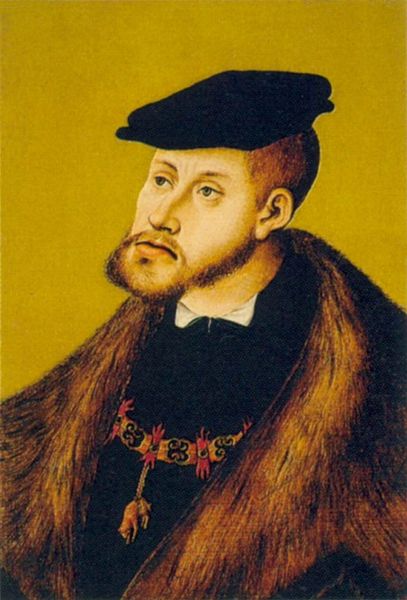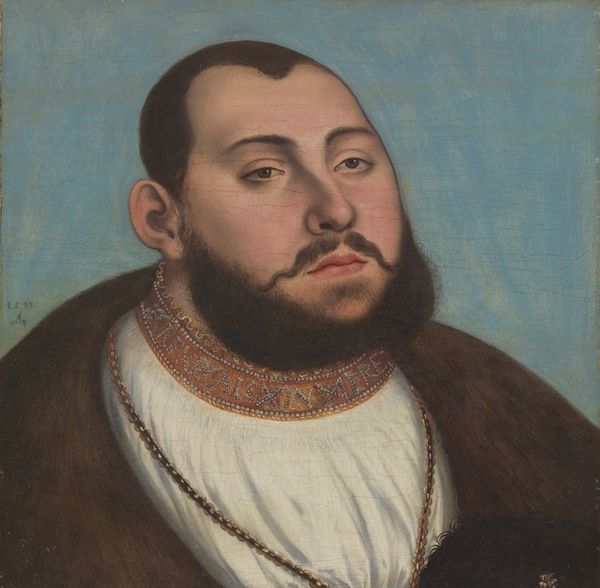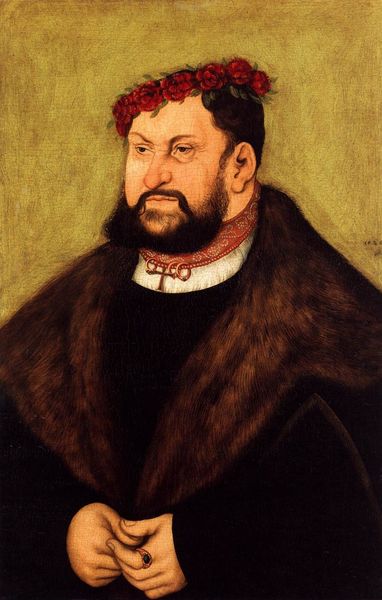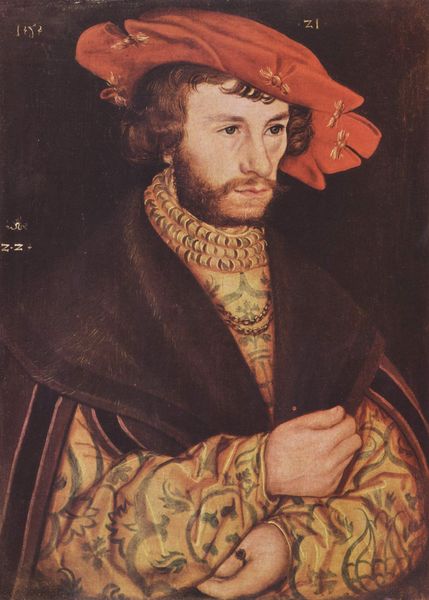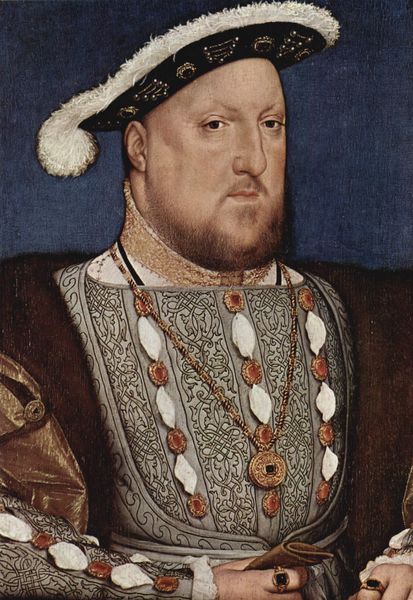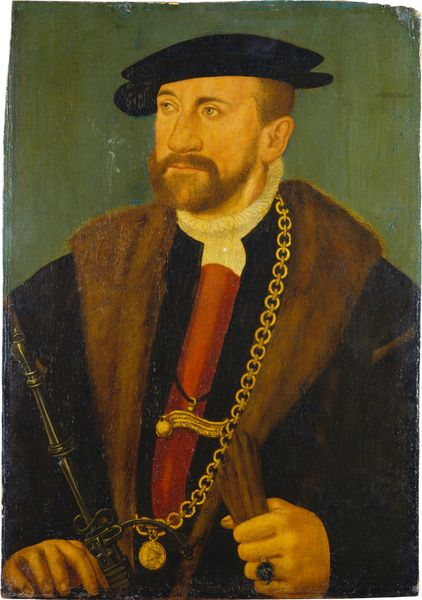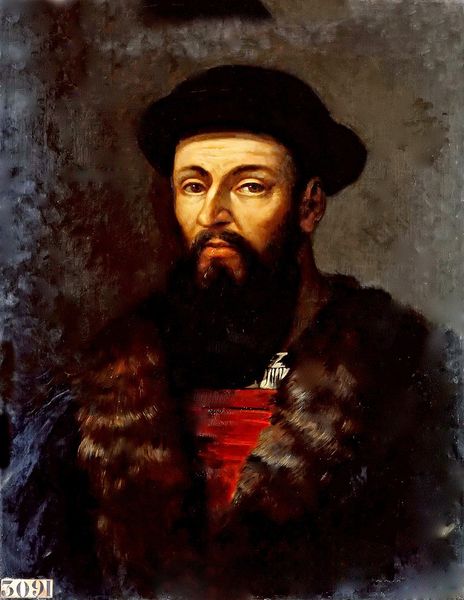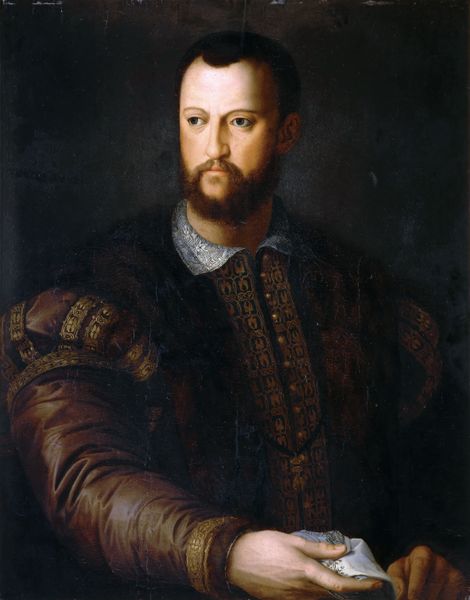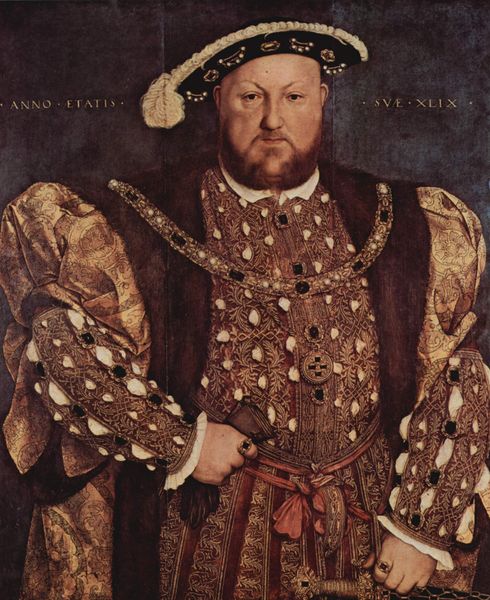
painting, oil-paint
#
portrait
#
painting
#
oil-paint
#
figuration
#
11_renaissance
#
oil painting
#
history-painting
#
northern-renaissance
Dimensions: 51 x 37 cm
Copyright: Public domain
Artist: Oh, hello. This is Lucas Cranach the Elder’s, oil on panel, portrait of Johann Friedrich, Elector of Saxony, completed in 1531. I always feel such a peculiar mixture of pity and awe looking at portraits like this. Art Historian: That’s interesting. My immediate impression is power – absolute, unflinching. There's such a calculated presentation here; the layers of fur, the rings, the ornamentation. Everything communicates wealth and authority. Artist: Absolutely! It's deliberate. You know, Cranach was court painter. These images served very specific purposes, reinforcing status and projecting a certain image of the subject to their peers and to history itself. Art Historian: Indeed. The Northern Renaissance portraits had very clear symbolic language, and here every detail speaks volumes. His gaze meets ours head-on, but there is something veiled, something…unreadable. And then you consider the pendant around his neck... It is unusual. Artist: Oh, that? You mean the dragon's tooth? That detail gets me every time. It’s as if he’s flaunting an uncanny and mysterious aura, adding a dash of the alchemical to this staid display of regalia. I like it because it humanizes him. I mean, without it, he’s just…another powerful nobleman. But with that talisman…who knows what’s swirling in his mind? Art Historian: The "dragon's tooth" is actually believed to be coral. In Renaissance symbology, coral was associated with protection against evil and harm. In addition, some theorize that the jewelry around the elector´s neck is meant to reflect his allegiance to a particular knighthood. Every color and material means something more...a promise, a secret... Artist: That adds layers, doesn’t it? Here I am thinking, oh, it makes him an individual and maybe that symbol only underlines he belonged to something much greater than himself... And also a sense of mortality... like he felt he needed defending against powers stronger than him? What do you make of that cloud-like, milky blue background? It feels so strange, so unrealistic. Art Historian: It almost amplifies the central image by contrast; the sitter is pushed into the front. The backdrop almost has the semblance of a dreamscape…unfathomable, a signifier of change, rather than timelessness, and adds this subtle yet disturbing depth to his figure...It feels oddly modern for something made centuries ago! Artist: I suppose it only reinforces my perception. As an artist I always look for an entry point to communicate and somehow to connect with the artwork, and this painting always felt as one. Thank you for that iconographic analysis; this helped me grasp another point of view about his background! Art Historian: And I must say, you opened a creative window here for me; I'm seeing it from a different point of view. Thanks to you!
Comments
No comments
Be the first to comment and join the conversation on the ultimate creative platform.
